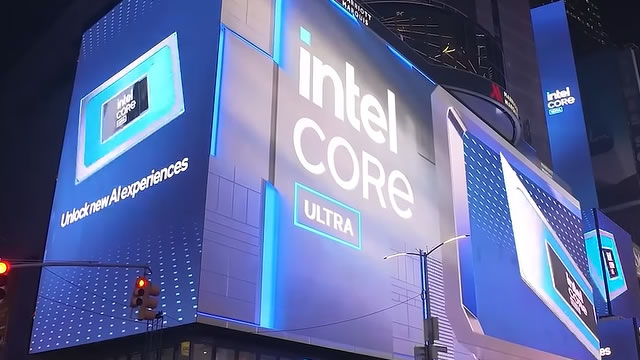Intel (INTC -7.62%), the world’s largest manufacturer of x86 CPUs for PCs and servers, was once considered a reliable blue chip tech stock. It had a wide moat, generated stable profits, and paid out reliable dividends.
But over the past decade, that moat evaporated, its market share shriveled, and its profits plunged. It finally suspended its dividend last year, and it’s now being led by its fourth CEO in just seven years. That’s why Intel’s stock has declined nearly 60% over the past three years.
But could that pullback represent a good buying opportunity for investors who plan to hold it for at least another three years? Let’s review its biggest challenges to find out.
Image source: Getty Images.
Why did Intel’s stock plummet?
Intel is an integrated device manufacturer (IDM) that designs, manufactures, and sells most of its own chips. That capital-intensive business model sets it apart from “fabless” chipmakers like Advanced Micro Devices and Nvidia, which outsource their manufacturing to third-party chip foundries like Taiwan Semiconductor Manufacturing (TSMC) and Samsung.
Intel’s foundries once produced the world’s smallest and densest chips. But instead of ramping up its R&D spending to maintain its lead in the “process race,” it squandered too much of its cash on clumsy acquisitions, wasteful buybacks, and big dividends.
As a result, Intel struggled with chip shortages and persistent delays as TSMC pulled ahead in the process race with a stable supply of more advanced chips. AMD, which redesigned its chips and outsourced its production to TSMC, then drew away Intel’s PC customers with cheaper and more power-efficient chips. According to PassMark Software, Intel’s year-end share of the x86 CPU market shrank from 82.2% in 2016 to 58.9% in 2024. AMD’s share during that time more than doubled from 17.8% to 38.4%.
As Intel lost its core market, it missed the seismic shift toward artificial intelligence (AI) chips — a booming market that Nvidia conquered with its high-end GPUs for data centers. Nvidia also replaced Intel in the Dow Jones Industrial Average last November.
As Intel struggled with its existential crisis, it endured abrupt strategic shifts under three CEOs. Brian Krzanich, who led Intel from 2013 to 2018, “di-worsified” Intel’s business with too many acquisitions. Successor Bob Swan divested some of those noncore businesses, aggressively cut costs, and even considered turning Intel into a fabless chipmaker before he was ousted in early 2021.
Pat Gelsinger then doubled down on upgrading Intel’s fabs to catch up to TSMC, but those efforts relied heavily on government subsidies and didn’t impress too many investors before his dismissal last December.
After Gelsinger’s departure, rumors swirled regarding a potential sale of Intel to TSMC and Broadcom. President Trump even encouraged TSMC, which is expanding its presence in the U.S. with more fabs, to take over Intel’s plants.
Will Intel’s newest CEO turn around its business?
But this March, Intel hired Lip-Bu Tan, the former CEO of chip designer Cadence Design Systems, as its new CEO. Tan doesn’t seem interested in selling the chipmaker. Instead, he wants Intel to improve its engineering capabilities, develop more CPUs with built-in AI features, and expand its struggling foundry business. He also warned that “bureaucracy kills innovation” and wants Intel to simplify and streamline its sprawling business.
However, those vague plans don’t sound too different from Gelsinger’s strategies — and it will take at least a few quarters to tell if Tan can reform Intel’s aging development model and stabilize its shaky business. For now, Tan needs Intel to deliver a steady supply of its current-gen Meteor Lake chips, gear up for the launch of its next-gen Panther Lake CPUs this year, and deal with the Trump administration’s “Liberation Day” tariffs and ongoing push to end its CHIPS Act subsidies for domestic chipmakers.
Where will Intel’s stock be in three years?
For now, analysts expect Intel’s revenue to grow at a compound annual growth rate (CAGR) of 4% from 2024 to 2027. And after two years of net losses, they expect it to return to profitability in 2026 and grow its EPS by 187% in 2027.
We should take those optimistic estimates with a grain of salt, but they might be realistic if Tan reboots Intel’s business in the same way Lisa Su saved AMD. Like Su, Tan is going back to the drawing board by developing fresh chips again — but we still don’t know if that 11th-hour effort will fare any better than Intel’s previous plans.
At $19 a share, Intel trades at 17 times its estimated earnings for 2027. Assuming Intel matches Wall Street’s estimates, grows its EPS by another 20% in 2028, and trades at a reasonable 20 times forward earnings by the first quarter of 2028, its stock price might rise about 37% to $26.20 per share within the next three years.
That would be a decent three-year gain, but Intel simply doesn’t have much room to make any more mistakes. If Tan’s turnaround fails to stabilize Intel’s business, its stock could either stagnate or slip even lower over the next three years. So while it could potentially bounce back by 2028, I’d rather wait for a few more quarters before pulling the trigger.
Financial Market Newsflash
No financial news published today. Check back later.










